Senecio flaccidus var. monoensis, Smooth Threadleaf Ragwort
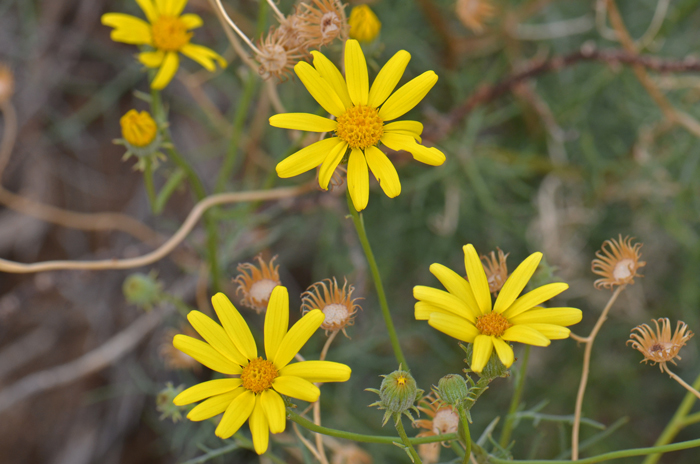
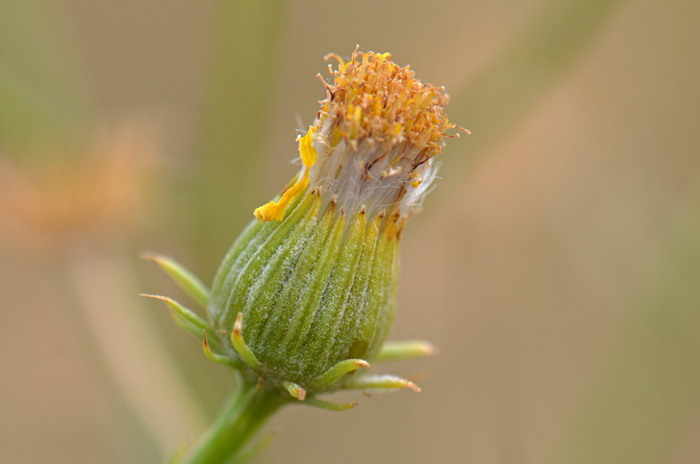
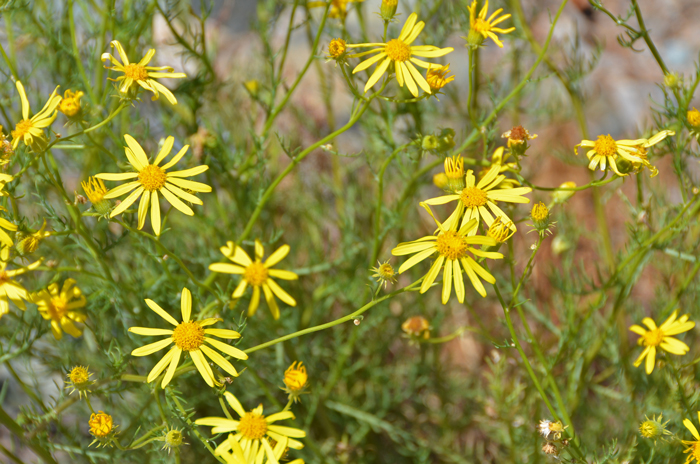
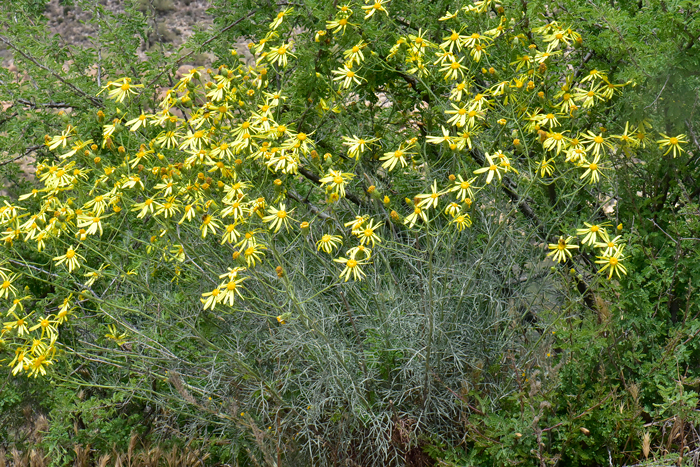
Scientific Name: Senecio flaccidus var. monoensis
Common Name: Smooth Threadleaf Ragwort
Also Called: Green Groundsel, Mono Ragwort, Sand Wash Groundsel, Shrubby Butterweed
Family: Asteraceae, Sunflower Family
Synonyms: (Senecio filicifolius, Senecio lathyroides, Senecio longilobus, Senecio douglasii, Senecio douglasii var. monoensis, Senecio monoensis, Senecio pectinatus)
Status: Native
Duration: Perennial
Size: Up to 3 feet (91 cm) or more.
Growth Form: Forb/herb, subshrub, glabrescent or glabrous, slender branches.
Leaves: Green; leaves arranged alternately on stems and branches; leaves slender and without hairs (glabrous); margins entire, revolute, pinnately divided into narrow comb-like (filiform) segments; up to 4 inches (10 cm).
Flower Color: Yellow; large , 3 to 4 inches (8-10 cm) and showy; flower heads on tips of branches, 1 or many heads in clusters; flower heads with both ray and disk florets; bracts subtending heads campanulate; fruit an cypsela.
Flowering Season: March, April to October, November
Elevation: 1,000 to 6,000 feet (305-1,829 m); 2,000 to 6,500 feet (610-1,981 m) in California
Habitat Preferences: Upper and lower desert, pinyon-juniper community, chaparral; open areas, mesas, slopes, canyons, dry washes, sandy or rocky sites.
Recorded Range: Smooth Threadleaf Ragword is found mostly in the southwestern United States in AZ, CA, NM, NV, TX, UT. This variety is also Native to Baja California and northern Mexico.
North America & US County Distribution Map for Senecio flaccidus var. monoensis.
North America species range map for Smooth Threadleaf Ragwort, Senecio flaccidus var. monoensis:
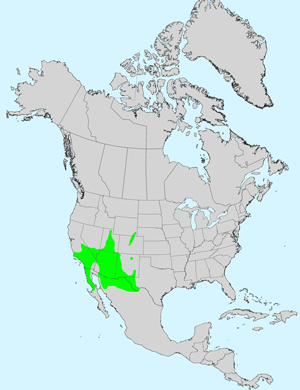
U.S. Weed Information: Unknown
Invasive/Noxious Weed Information: Unknown
Wetland Indicator: Unknown
Threatened/Endangered Information: Unknown
The genus Senecio was published in 1753 by Carl Linnaeus, (1707-1778).
In the Southwestern United States: Arizona has 13 species of Senecio, California has 25 species, Nevada has 15 species, New Mexico has 22 species, Texas has 9 species, Utah has 18 species. Data approximate and subject to revision.
There are 3 varieties in Senecio flaccidus;
Senecio flaccidus var. douglasii, Douglas' Ragwort (CA, CO, KS);
Senecio flaccidus var. flaccidus, Threadleaf Ragwort (AZ, CO, NM, NV, OK, TX, UT);
Senecio flaccidus var. monoensis, Smooth Threadleaf Ragwort (AZ, CA, NM, NV, TX, UT).
Comments: The flowers of Threadleaf Groundsel (Senecio flaccidus) and it's sub-species are too similar to use as a field identification characteristic.
Smooth Threadleaf Ragwort, variety monoensis with its smooth, mostly glabrous features and comb-like pinnatifid leaves are key features that help to separate it from Threadleaf Ragwort, Senecio flaccidus var. flaccidus where varieties overlap. Senecio flaccidus var. monoensis intergrades with var. douglasii and with var. flaccidus in areas of range overlap.
In Southwest Desert Flora also see Lemmon's Ragwort, Senecio lemmonii, Threadleaf Ragwort, Senecio flaccidus var. flaccidus, Threadleaf Groundsel, Senecio flaccidus and Common Groundsel, Senecio vulgaris.
The genus Senecio is known to contain alkaloids which may cause liver damage in livestock.
The genus Senecio was published in 1753 by Carl Linnaeus, (1707-1778).
The species epithet “flaccidus” (flac'cidus:) is Latin for flaccid.

